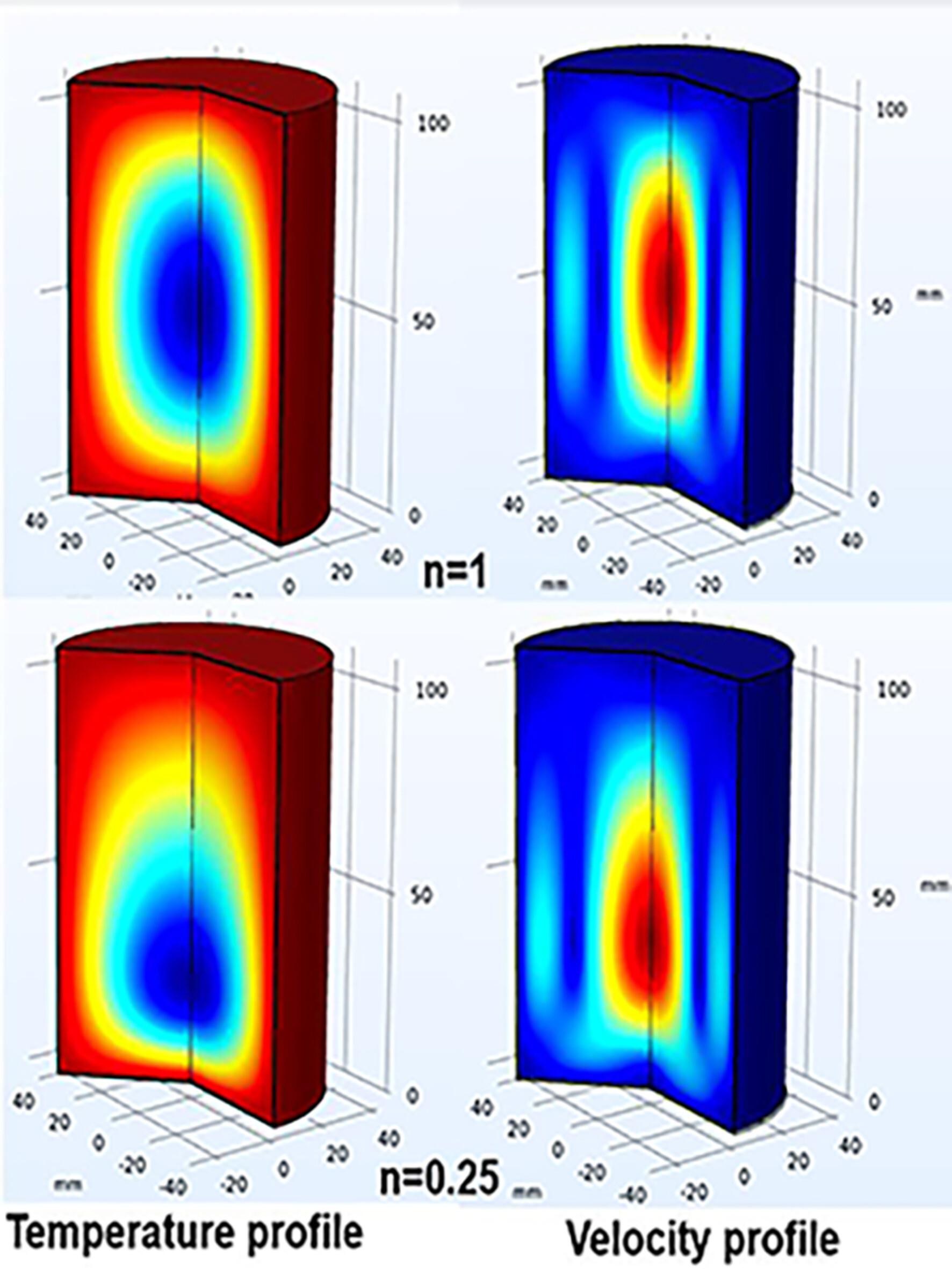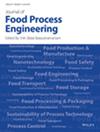The objective of this study was to investigate the impact of the flow behavior index (n) on heat transfer and fluid flow in carboxymethyl cellulose (CMC) solutions during the thermal process within a cylindrical container. The study employed a numerical model based on the finite element method to solve the governing equations for mass, momentum, and energy conservation. Four different values of n were considered, ranging from 0.25 to 1, representing varying degrees of non-Newtonian behavior. The results revealed that this index significantly influenced the apparent viscosity of the fluid, subsequently affecting the fluid flow patterns and heat transfer. Specifically, the n = 0.25 fluid exhibited a notably higher Grashof number (GR) and velocity compared to the n = 1 fluid. The average GR for the n = 0.25 fluid was ~2300 times larger than that of the n = 1 fluid, while the average velocity for the n = 0.25 fluid was ~37 times higher. In addition, the study identified the presence of secondary flow in the CMC solution with n = 0.25, which enhanced fluid mixing and heat transfer. Notably, the slowest heating zone for the n = 1 fluid remained fixed at the mid-height of the can, whereas for the n = 0.25 fluid, it continuously shifted and contracted, ultimately settling at the 10% height from the bottom of the can. These findings underscore the critical importance of considering the non-Newtonian characteristics of the fluid and convective flow during heat transfer processes in product applications.
The study investigates the impact of flow behavior indices of the CMC solution on heat transfer and fluid dynamics within cylindrical containers. By examining parameters such as concentration, temperature, and heating duration, the researcher aims to optimize thermal processing for liquid food products containing thickening agents, such as sauces, soups, or dairy items. These findings significantly contribute to ensuring the safety, quality, and nutritional value of diverse liquid food products. Moreover, the study's insights may lead to energy savings and reduced environmental impact by minimizing heating time and temperature during thermal processing. In summary, this research bridges scientific understanding with practical applications, benefiting both consumers and the environment.



